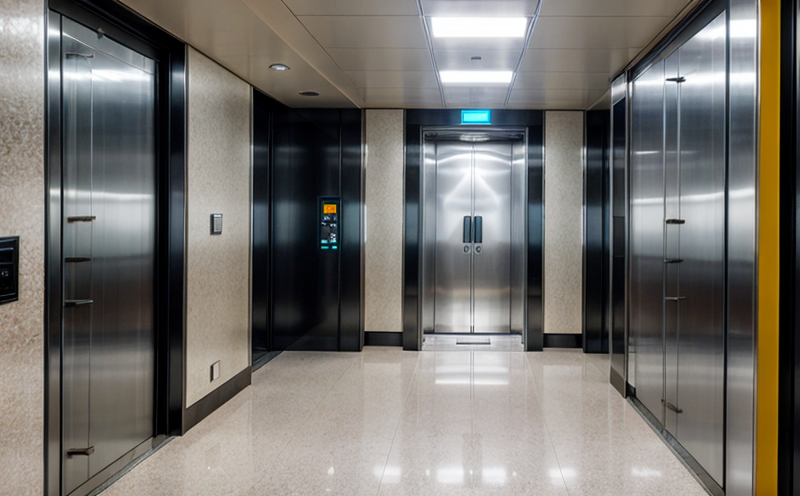Machine-room-less elevator inspection
Elevator and escalator systems are critical components of modern buildings, ensuring safe and efficient vertical transportation. The machine-room-less (MRL) design is a significant advancement in the field of elevators, offering space-saving advantages by eliminating the need for a traditional machine room. This innovative design has been widely adopted due to its ability to reduce construction costs, improve energy efficiency, and enhance accessibility.
The inspection process for MRL elevators involves several key steps that ensure compliance with international standards such as ISO 18760-2:2015 and ASME A17.1/CSA B44.1-2019. These standards provide the framework for conducting thorough inspections to maintain safety and performance. The inspection process typically includes visual assessments, functional tests, and detailed examinations of critical components.
Visual assessments are crucial in identifying any visible signs of wear or damage that could compromise the integrity of the elevator system. Functional tests involve simulating real-world conditions to evaluate the performance of the elevator under various operational scenarios. For MRL elevators, this includes testing the motor, control systems, and safety devices such as emergency stop buttons and door sensors.
Detailed examinations often require specialized equipment and techniques. Ultrasonic testing may be used to detect hidden defects in the lift cables or structural components. Non-destructive testing (NDT) methods like magnetic particle inspection are employed to identify surface and near-surface flaws without damaging the material. These tests provide critical data that helps determine the overall condition of the elevator system.
The inspection process is not only about identifying potential issues but also about providing actionable insights for maintenance and repair. By adhering to strict standards, inspectors can ensure that MRL elevators operate safely and efficiently throughout their service life. This proactive approach helps prevent accidents and extends the lifespan of the equipment, thereby reducing long-term costs.
Machine-room-less elevators are particularly common in high-rise buildings where space is at a premium. The absence of a dedicated machine room allows for more efficient use of vertical space, which is especially beneficial in urban environments with limited real estate availability. Additionally, MRL designs contribute to environmental sustainability by reducing the footprint of new construction projects and minimizing energy consumption associated with cooling and ventilation systems.
Inspecting an MRL elevator requires a comprehensive approach that balances technical expertise with practical considerations. The inspection process must address not only the mechanical components but also the electrical systems and software controls, which are integral to modern elevator operation. By leveraging advanced diagnostic tools and techniques, inspectors can ensure that all critical aspects of the system meet regulatory requirements.
The importance of regular inspections cannot be overstated. As MRL elevators age, their performance may degrade over time, leading to increased wear and tear on components. Regular inspections help identify these issues early on, allowing for timely interventions before they escalate into more serious problems. This preventive maintenance approach is essential for maintaining the reliability and safety of elevator systems.
Industry Applications
MRL elevators find widespread application in various sectors where space efficiency and energy savings are paramount. Here, we present a table that outlines some key applications:
| Application Sector | Description of Use |
|---|---|
| High-Rise Residential Buildings | Elevators in these buildings help residents navigate between floors efficiently, reducing the need for stairs. |
| Commercial Office Spaces | MRL elevators facilitate easy access to upper floors, enhancing productivity and comfort for employees. |
| Shopping Malls | Elevators are crucial in moving large numbers of people quickly between levels, supporting efficient mall operations. |
| Hospitals | MRL elevators provide essential vertical transportation within hospital environments, ensuring timely patient care and staff movement. |
- Residential buildings: Efficient movement for residents.
- Offices: Enhanced productivity through easy access to floors.
- Shopping centers: Support for large crowds during peak times.
- Hospitals: Critical role in patient and staff mobility.
The diverse applications of MRL elevators highlight their versatility across various industries. Their ability to adapt to different environments makes them an ideal choice for a wide range of facilities, contributing significantly to the overall functionality and efficiency of these spaces.
Eurolab Advantages
At Eurolab, we pride ourselves on offering comprehensive services tailored to meet the unique needs of our clients. Our expertise in elevator and escalator inspection is complemented by a commitment to excellence in every aspect of our work.
- Compliance with International Standards: Ensuring all inspections adhere to the latest international standards, such as ISO 18760-2:2015 and ASME A17.1/CSA B44.1-2019.
- State-of-the-Art Equipment: Utilizing advanced diagnostic tools for accurate and reliable inspections.
- Experienced Inspectors: Highly trained professionals with extensive experience in elevator and escalator inspection.
- Comprehensive Reports: Providing detailed reports that offer insights into the condition of the equipment, along with recommendations for maintenance and repair.
We understand the importance of maintaining high standards in elevator and escalator inspections. Our services are designed to provide peace of mind by ensuring that all systems operate safely and efficiently. By leveraging our expertise and resources, we can help clients achieve their goals while adhering to strict regulatory requirements.





